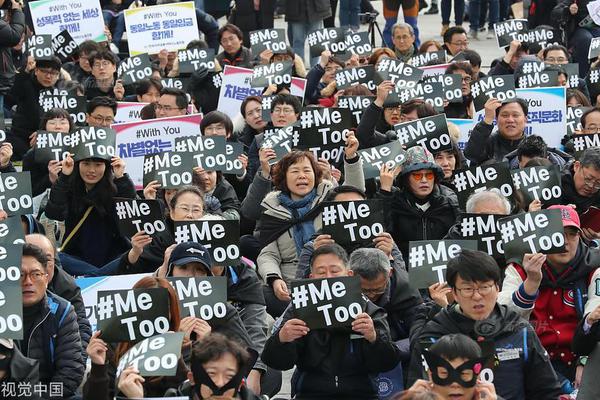Thewell coffeehouse bellevue big shareholder groups in Wanbury Limited (
NSE:WANBURY

) have power over the company. Institutions often own shares in more established companies, while it’s not unusual to see insiders own a fair bit of smaller companies. Warren Buffett said that he likes ‘a business with enduring competitive advantages that is run by able and owner-oriented people’. So it’s nice to see some insider ownership, because it may suggest that management is owner-oriented.

With a market capitalization of ₹460m, Wanbury is a small cap stock, so it might not be well known by many institutional investors. Taking a look at the our data on the ownership groups (below), it’s seems that institutional investors have not yet purchased much of the company. Let’s delve deeper into each type of owner, to discover more about WANBURY.

View our latest analysis for Wanbury
NSEI:WANBURY Ownership Summary January 1st 19
What Does The Institutional Ownership Tell Us About Wanbury?
Many institutions measure their performance against an index that approximates the local market. So they usually pay more attention to companies that are included in major indices.
Less than 5% of Wanbury is held by institutional investors. This suggests that some funds have the company in their sights, but many have not yet bought shares in it. If the company is growing earnings, that may indicate that it is just beginning to catch the attention of these deep-pocketed investors. When multiple institutional investors want to buy shares, we often see a rising share price. The past revenue trajectory (shown below) can be an indication of future growth, but there are no guarantees.
NSEI:WANBURY Income Statement Export January 1st 19
Hedge funds don’t have many shares in Wanbury. As far I can tell there isn’t analyst coverage of the company, so it is probably flying under the radar.
Insider Ownership Of Wanbury
The definition of company insiders can be subjective, and does vary between jurisdictions. Our data reflects individual insiders, capturing board members at the very least. Management ultimately answers to the board. However, it is not uncommon for managers to be executive board members, especially if they are a founder or the CEO.
I generally consider insider ownership to be a good thing. However, on some occasions it makes it more difficult for other shareholders to hold the board accountable for decisions.
Shareholders would probably be interested to learn that insiders own shares in Wanbury Limited. It has a market capitalization of just ₹460m, and insiders have ₹29m worth of shares, in their own names. Some would say this shows alignment of interests between shareholders and the board, though I generally prefer to see bigger insider holdings. But it might be worth checking
if those insiders have been selling.
Story continues
General Public Ownership
The general public holds a 30% stake in WANBURY. While this size of ownership may not be enough to sway a policy decision in their favour, they can still make a collective impact on company policies.
Private Company Ownership
We can see that Private Companies own 60%, of the shares on issue. It might be worth looking deeper into this. If related parties, such as insiders, have an interest in one of these private companies, that should be disclosed in the annual report. Private companies may also have a strategic interest in the company.
Next Steps:
I find it very interesting to look at who exactly owns a company. But to truly gain insight, we need to consider other information, too.
Many find it useful
to take an in depth look at how a company has performed in the past. You can access
this
detailed graph
of past earnings, revenue and cash flow
.
Of course
this may not be the best stock to buy
. Therefore, you may wish to see our
free
collection of interesting prospects boasting favorable financials.
NB: Figures in this article are calculated using data from the last twelve months, which refer to the 12-month period ending on the last date of the month the financial statement is dated. This may not be consistent with full year annual report figures.
To help readers see past the short term volatility of the financial market, we aim to bring you a long-term focused research analysis purely driven by fundamental data. Note that our analysis does not factor in the latest price-sensitive company announcements.
The author is an independent contributor and at the time of publication had no position in the stocks mentioned. For errors that warrant correction please contact the editor at
.
View comments


 相关文章
相关文章![5%, led by a 17% increase in average ticket and a slight decline in traffic. Growth in the quarter reflected the impact of households stocking up on essentials like paper goods and cleaning supplies as the pandemic became a nationwide concern, along with strength in discretionary categories as the quarter came to a close and stimulus dollars and tax refunds were disbursed.</p><br><p>As shown below, the results in the quarter materially changed the trend in two-year stacked comps for each of the banners, along with a significant acceleration for consolidated comps.</p><br><p>The increase in consolidated comps was the primary driver of an 8% increase in revenues to $6.3 billion. The company ended the quarter with 15,370 locations, up less than 1% year-over-year. This reflects a 7% increase in Dollar Tree units, offset by a 4% decline in Family Dollar units.</p><br><p>The top-line results at each banner flowed through to their respective income statements, with Dollar Tree gross margins and operating margins declining year-over-year while Family Dollar gross margins and operating margins expanded year-over-year. On a consolidated basis, gross margins contracted by 120 basis points in the quarter to 28.5%, reflective of a shift to lower-margin consumables, tariff costs and the impact of markdowns from the Easter headwinds at the Dollar Tree banner. The company saw slight operating leverage on SG&A from higher comps, with the net result being an 80 basis point contraction in operating margins to 5.8%, with operating income declining 5% to $366 million. This is not adjusted for $73 million of pandemic-related costs, such as PPE supplies.</p><br><p>In the first quarter, the company opened 85 stores (net of closures) and completed 220 Family Dollar renovations to the H2 format. Importantly, comps at renovated Family Dollar stores continue to outpace the chain average by more than 10%. On the call, management indicated that they plan on reducing both the number of new store openings (from 550 to 500) and the number of H2 renovations (from 1,250 to 750) in 2020.</p><br><p>Personally, given the fact that Family Dollar is seeing material benefits to its business from the pandemic with new or lapsed customers coming into its stores, I think the company should try to get more aggressive with its renovation plans, not less. On the other hand, you could argue that renovations cause short-term disruptions and limit their ability to fully capitalize on the business momentum they are currently experiencing.</p><br><p>As a result of fewer new stores and remodels, management now expects 2020 capital expenditures to total $1.0 billion compared to previous guidance of $1.2 billion. In addition, the company has temporarily suspended share repurchases. At quarter's end, the company had $1.8 billion in cash on its balance sheet compared to $4.3 billion in total debt.</p><br><p>Conclusion</p><br><p>In recent years, Dollar Tree has been a tale of two cities. While its namesake banner has generally delivered impressive financial results, Family Dollar has been a persistent underperformer. This quarter, those results flipped, and given what we've seen in the weeks since quarter's end, there's a decent possibility that we will see something similar in the coming months. As the CEO noted, the second quarter is off to a very good start at Family Dollar.</p><br><p>Here's the important question: how useful is that information is in terms of making future predictions about the business? Will recent success at Family Dollar translate into long-term success for the banner? The optimistic take is that new or lapsed customers, especially those visiting the renovated stores, could become recurring business for the banner. The pessimistic take is that they have experienced short-term success out of necessity as people went to any store that was open to try and find essentials like toilet paper and hand sanitizer that were largely out of stock throughout the retail landscape. From that view, many of these customers could abandon the retailer when life returns to normal. As Philbin noted on the conference call, early on [during the pandemic], folks needed us. Will people still shop as much at Family Dollar when it's no longer a necessity?</p><br><p>Personally, I do not place too much weight on the recent results. I will need to see incremental data points that indicate that Family Dollar has truly won sustained business from these new customers. While I still believe that the Dollar Tree banner is a well-positioned retailer with attractive unit returns, I'm not yet willing to say the same thing for Family Dollar. For that reason, along with the recent run-up in the stock price, I plan on staying on the sidelines for now.</p><br><p>Disclosure: None</p><br><p>Read more here:</p><br><p>Under Armour: A Tough Start to 2020</p><br><p>Walmart: Continued Omni-Channel Progress</p><br><p>Match: An Impressive Start to 2020</p><br><p>Not a Premium Member of GuruFocus? Sign up for a free 7-day trial here.</p><br><p>This article first appeared on</p><br><p>GuruFocus</p><br><p>.</p><br><p>Warning! GuruFocus has detected 4 Warning Signs with DLTR. Click here to check it out.</p><br><p>DLTR 30-Year Financial Data</p><br><p>The intrinsic value of DLTR</p><br><p>Peter Lynch Chart of DLTR</p><br><p>View comments</p><br>](http://n.sinaimg.cn/news/transform/w600h400/20180314/LmMx-fysfxss0447226.jpg?zdy)




 精彩导读
精彩导读




 热门资讯
热门资讯 关注我们
关注我们
